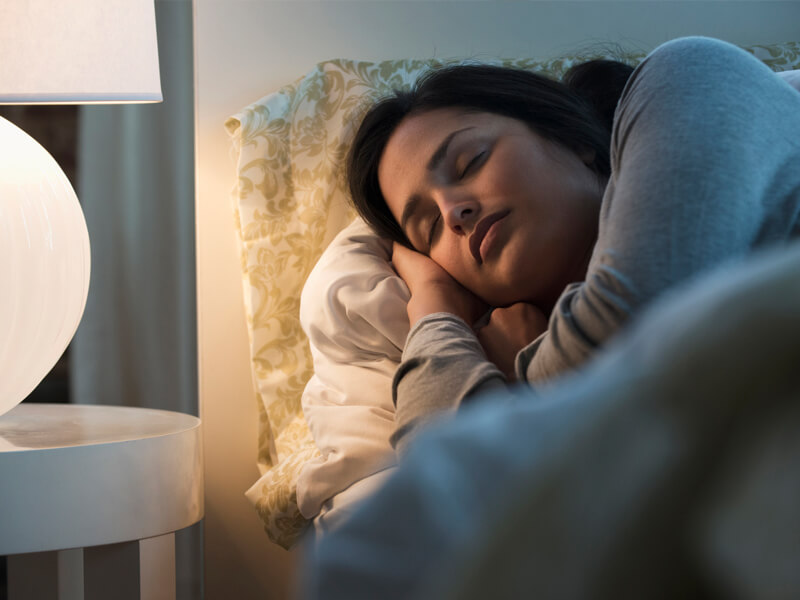How circadian lighting makes for a better night’s sleep
If you spend a large part of your day in artificial light indoors, it can really mess with your sleep cycle. Here’s how circadian lighting may help.
Light is a critical part of our lives, affecting everything from mood to sleep and our circadian rhythm.
Our circadian rhythms in particular are highly dependent on exposure to light, and getting the right kind of light at key times of the day can help optimise our 24-hour sleep-wake cycle.
More often than not we spend a significant amount of time in artificial light, whether it’s at home, in the office or simply going about our day, which can affect our circadian timing system.
Enter circadian lighting, new technology that’s said to bridge this problem.
What is circadian lighting?
The Better Sleep Clinic behavioural sleep psychologist Dan Ford says circadian lighting, also known as human-centric lighting, is a lighting system now in use everywhere from classrooms to office buildings and nursing homes.
“Circadian lighting are light bulbs designed to mimic the kinds of light wavelengths that are present at sunrise and sunset in the natural environment,” Dan says.
How does circadian lighting work?
Sleep Health Foundation chairwoman Professor Shantha Rajaratnam says we are rapidly developing a better understanding of the neuroscience of how light affects the circadian system, and what properties of light are important for regulating circadian clocks.
“We now know that timing, intensity, colour of spectral composition, and duration of exposure to light are all important variables,” Prof Rajaratnam says.
Circadian lighting aims to take this into account, emitting light that is optimised for a particular time of day, from short wavelength-depleted light (blue) to help prepare for sleep at night to light enriched with short wavelength to encourage alertness during the day.
- Healthy choices: The A-Z of sleep aids
How circadian lighting can help our sleep cycle
We spend 90 per cent or more of our time indoors, which means the kind of lighting we’re exposed to is important for our circadian rhythm.
University of Washington Health Sciences/Medicine researchers found wavelengths at sunrise and sunset had the biggest impact to brain centres, which regulated our circadian clock, along with mood and alertness.
“The light at dusk/dawn is particularly important in entraining the human circadian alerting system,” Dan says.
“Poor entrainment may result in a range of health problems, ranging from insomnia (trouble falling asleep, staying asleep, and waking too early), to more chronic problems seen in shift workers such as metabolic disorders and cancers.”
Prof Rajaratnam says circadian lighting would benefit adolescents in the school environment as their circadian rhythms begin to shift later, which results in them having an inadequate amount of sleep.
He says it would also help those who spend a lot of time indoors, such as office workers and those in an institutional or residential settings, including aged care centres and prisons.
“Circadian lighting has the potential to enhance our health, wellbeing and safety, through optimising the light-dark information received by the circadian timing system,” Prof Rajaratnam says.
Circadian lighting would also be particularly helpful for those with irregular work patterns such as shift workers, whose circadian system is particularly disrupted due to working odd hours.
- Bedtime blues: How to know it’s time to go to sleep school
Is circadian lighting worth it?
Circadian lighting is still a fairly new technology, and the research demonstrating its benefits is still a work in progress.
While Prof Rajaratnam says it is one way to harness the power of light to promote better health and wellbeing, there is another, totally free, option – and that is to maximise your exposure to natural outdoor light.
“(Aim to) get more sunlight in the morning, middle of the day and less [artificial] light exposure at night. It can achieve the same thing [as circadian lighting],” Dan says.
Written by Tania Gomez.






